Time-Tested Strategies and Tips for your next Adaptive Aquatics Lesson
What do we do when teaching the traditional mechanics of learning to swim are not working?
Swim instructors need more tools to discover what the obstacle to swimming could be. For the past 24 years, Swim Angelfish has worked with swimmers who have a range of significant to mild anxiety. We have discovered that identifying the underlying problem is the best way to overcome the obstacle.
If your typical progressions are not working for your swimmers with anxiety, go ahead and CHANGE your plan! Work to discover the underlying problem instead of repeating what is not currently working. As a parent, swimmer, coach, or aquatic director, adding strategies described below will decrease the struggle you may be having and allow you to reach your swim goals. In addition, your parents, instructors, and students will have a more positive experience. Learning to swim is a safety skill that all children and adults need.
We will share some strategies from our adaptive swim whisperer toolbox that have allowed us to teach skills faster and with more comfort. Whether it is a private or group class, you will begin to see a change in your swimmer with anxiety or general discomfort.
We are empowering instructors with the strategies they need to figure out why their students cannot find comfort and progress with learning how to swim.
We have identified five strategies that you can incorporate into your very next lesson that are specific to swimmers that have anxiety and discomfort in the water.
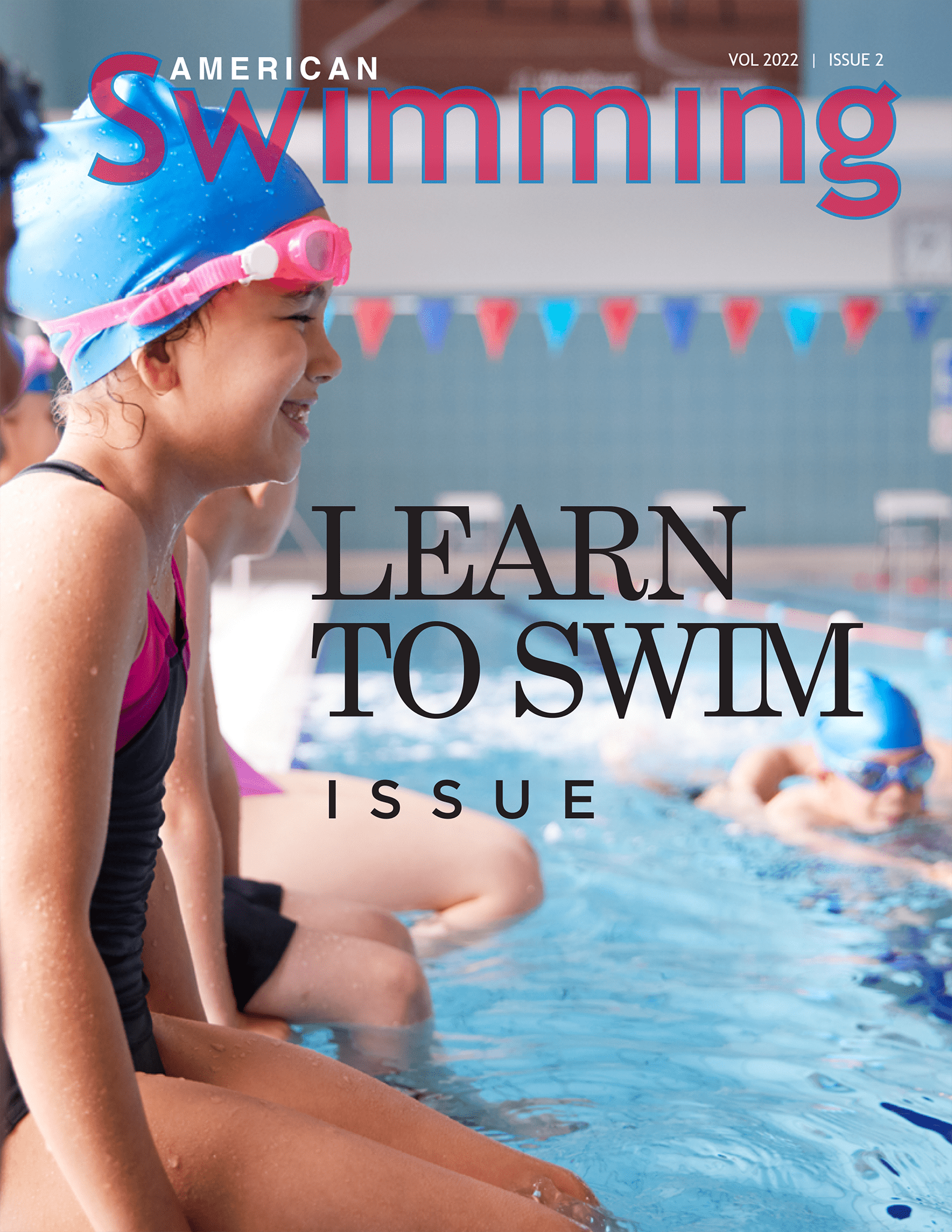
Add one or all of the strategies to your Learn to Swim Toolbox.
1. Body Control:
Address the underlying problem and help your swimmer control their body, and give them a sense of gravity. Implement this strategy, overcome the obstacle, and return to your swim curriculum to reach your swim skill benchmark. Buoyancy can be a scary thing when someone lacks body control.
Strategy: Have them wear a long sleeve shirt that is a bit thick to give them instant grounding. Water is dynamic and buoyant, which can cause anxiety about how to control your body. The weight of the shirt increases comfort and counteracts buoyancy. Be sure to explain to the swimmer why he will feel increased comfort. In a group class, have all the students wear a cotton shirt. Work to allow 5-8 minutes of walking, jumping, and games that involve movement. Before taking the shirt off, get in a “blast off” or “wall ball” position and have the students look up and down, practicing moving their hands with a stable body. You can say head back, chin in the water, look up and look down, or blow bubbles and look at the ceiling. Your goal is to get them moving their head without moving their body. This is called dissociating your head from your body. While in a flexed ball, doing this increases comfort and improves body control, especially with the shirt on.
Activities using a large fluid noodle, semi-deflated ball, or bolster, creates flexion in the body as you swim with it. This position helps decrease anxiety and wash away adrenaline in your anxious swimmer. Try practicing kicking as they hold this piece of equipment against their stomach. Check out the Equipment tips video on our YouTube channel for more uses of our favorite pieces of equipment.
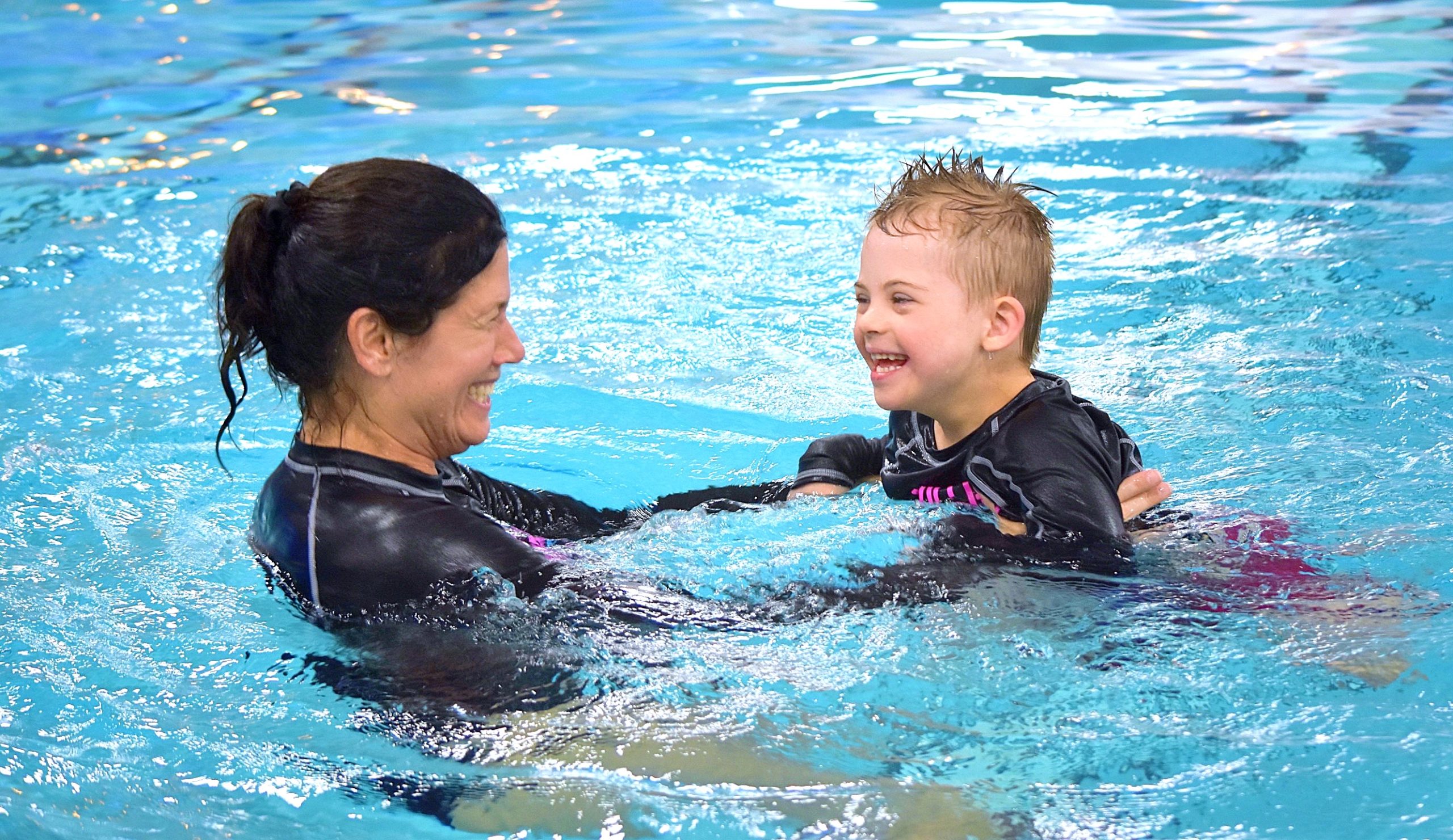
2. Power of Peer:
Positive competitiveness and peer modeling take pressure off the lesson, and magic happens. Some articles on swimming and anxiety mention strategies of distraction and humor. As seasoned instructors, we know this can work. So, let’s take a deeper dive into how you can wash away the anxiety by adding another student.
Strategy: As a new way of thinking, try to add a sibling, friend, or another swimmer for one lesson to discover if this reduces the anxiety. We have had great success putting two highly anxious kids in a semi-private. This seems counterintuitive, but making this transition might help you discover they help each other diminish anxiety. Most of us do not want a parent in the pool with us, right? Once in a while, this can be a game-changer for a lesson or two. Tell your swimmer (use a social story as a strategy) that mom/dad will get in the pool with us two times, and then we will go back with our friends. You will swim with the swim teacher and your parents and then swim with your friends. If you want more of these tips, become a Certified Swim Whisperer with our online adaptive aquatic training.
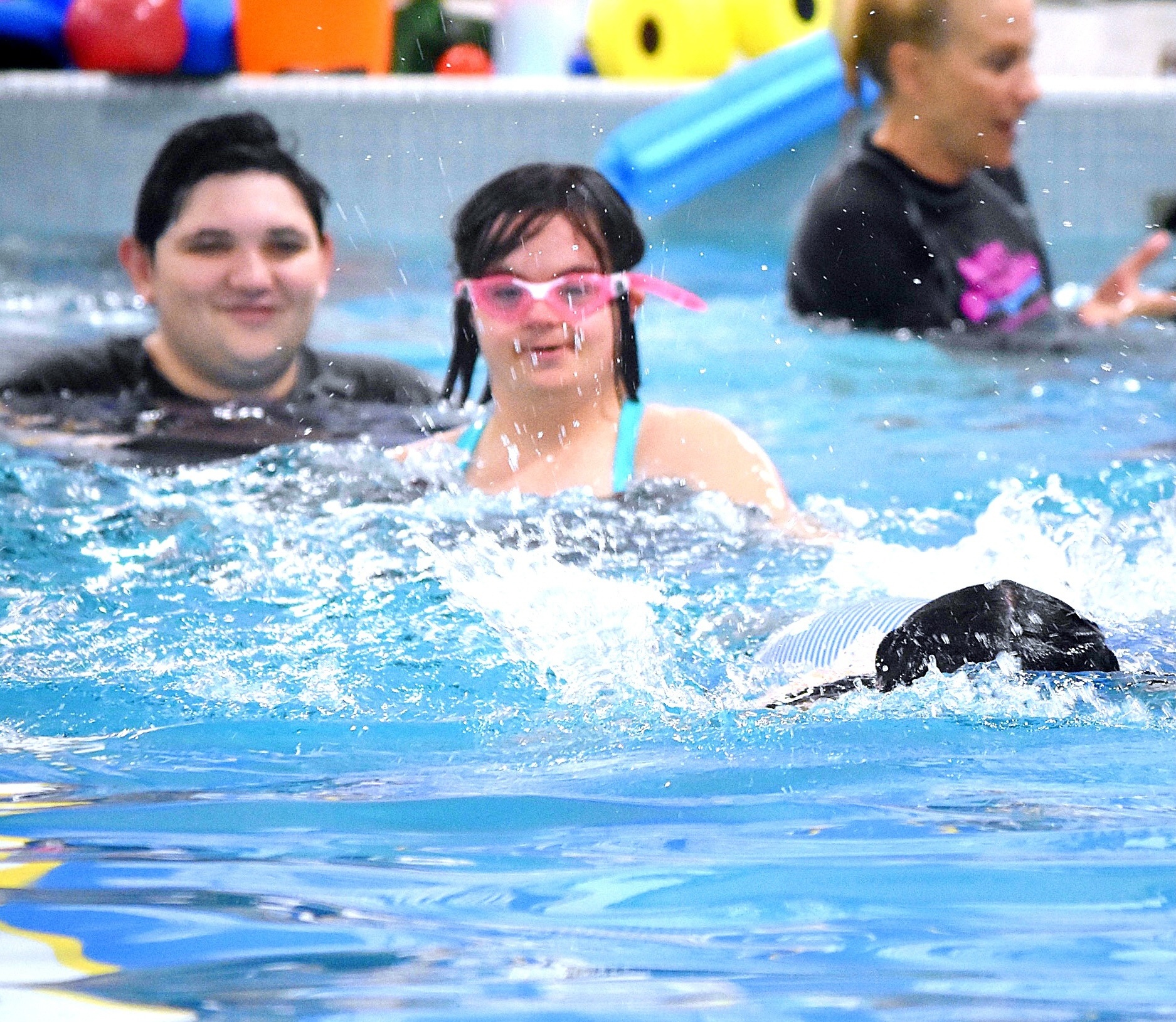
3. Having your Swimmer Own Their Success:
See it, Say it, Feel it; that’s HOW you own it. For example, when your anxious student starts talking about his fears, they might say things like: I don’t want to go under, I’m not safe, don’t push me, do I have to swim, I don’t want to swim, promise I won’t get splashed, how do you respond? Let’s look at ways we can take action to reduce this negative loop of thinking and replace it with positive self-talk to reduce anxiety.
Strategy: One thing you can recommend is having your students watch videos of swimmers happy in the water. Floating, playing, and smiling, they begin to see this happiness in the comfort of their own home. Another tip is when you get moments of reduced anxiety and happiness in your lesson, be prepared to take a quick photo or short video of your swimmer comfortable in the water, and then they can watch it. Research shows that watching a video within a couple of hours of doing a new skill helps with motor learning. Finally, you can take the time to implement one or more of these tips to improve comfort.
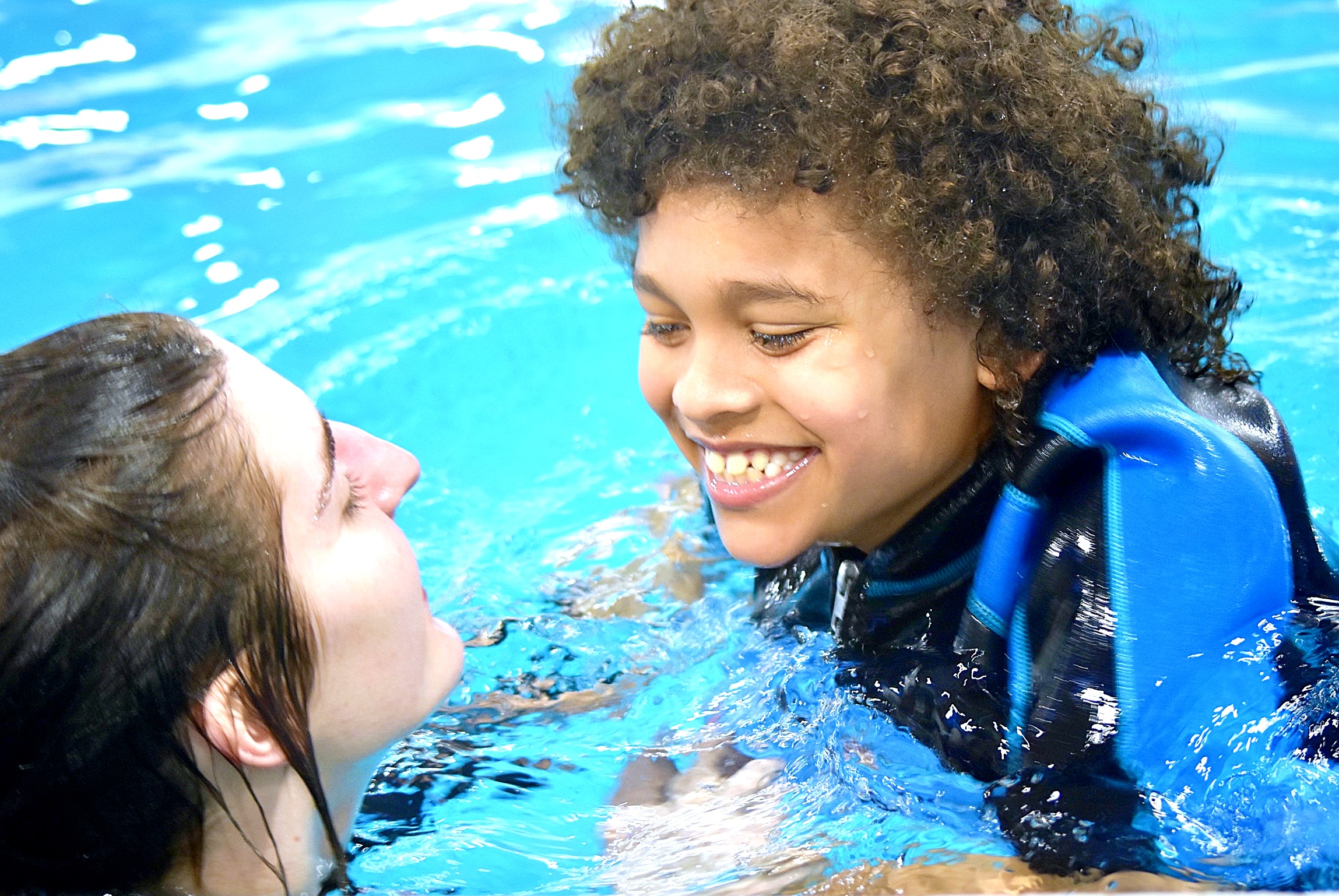
4. A Schedule for Success:
Give a schedule of activities happening in the lesson. There are multiple ways that you can arrange your swim lesson. How many of you like to know precisely what will happen when you take any kind of class? We all want to be prepared for the unknown. Decide to adapt your lesson plan with a schedule. Don’t forget to use this tip for Adult learn to swim too!
Strategy: Use some kind of schedule: Pictures that are laminated and used to give the order of activities in your lesson. You don’t want to look for photos; no problem; here is a link to 24 pictures to laminate and get started. Make your visual schedule. Another strategy is to Line up the actual equipment, 3-5 things, on the side of the pool that you will use in order. Make a story or song about the schedule and help the class visually see the plan. Have you ever thought about using a dry erase board? Write down the plan and allow the student to review and perhaps re-arrange the activities. This will give them some control over the lesson. Kids and Adults love to erase each activity and see that they are progressing. Be creative, and make sure your swimmer knows the PLAN somehow. We recommend doing the same routine three times in a row to become familiar and comfortable.
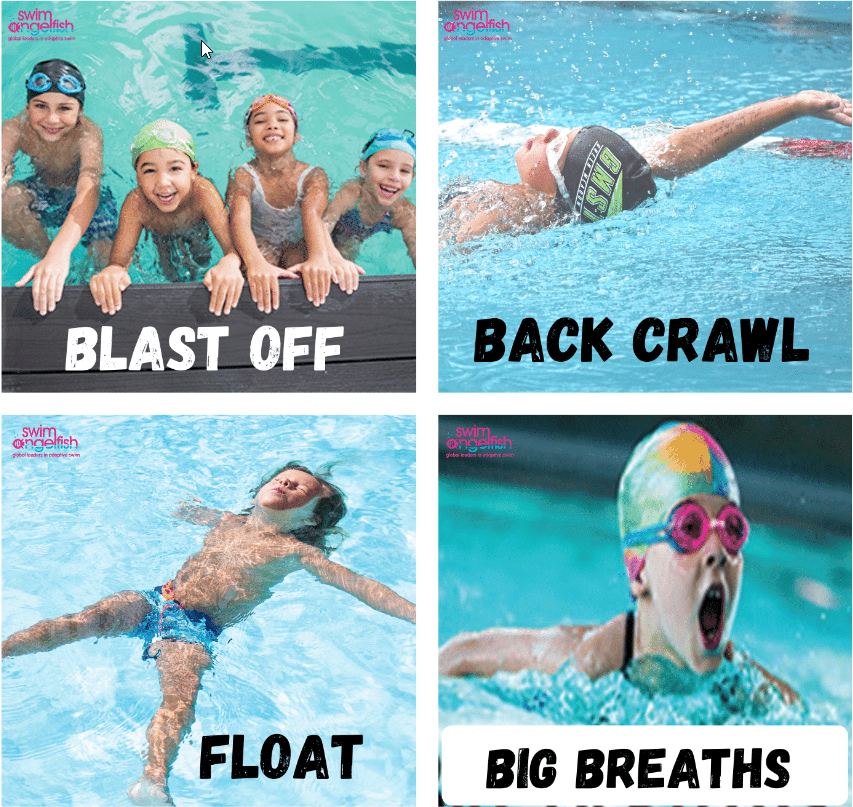
5. Breathing:
When, Why, and How: Help your swimmer take some deep breaths. This releases neurochemistry in your brain called dopamine which makes you feel calm. Have you ever had someone tell you to take a few deep breaths when getting nervous or anxious?
Strategy: Move to sit to stand neck-deep in the water- Use the water’s hydrostatic pressure to assist you in pushing the air out as you sit: flexion helps you exhale. Rise and extend your body as you breathe in. Extension assists with the inhale. This is familiar to yoga, karate, and stress-reducing breathing meditations. You have the power of the properties of the water to improve a deep breath that can wash away anxiety and improve comfort. If your swimmer likes to move, try having them hold the wall and do frog kicks, bring legs to the wall for flexion, and pair this with bubbles for exhalation, then extend the legs behind them as they inhale. Remember, flexion helps you exhale, and extension assists with inhaling. Here’s a video of how we use this strategy to help Max gain control of his breathing. Sensory Swimming- Strokes are possible.
Are you already doing many of these strategies? Maybe the underlying problem can be discovered by having the parent watch our FREE Parent tips online training video.
Adaptive Aquatics Education
Sometimes if we educate the parents with specific education of how the water properties can affect a swimmer, they will be able to assess, identify and provide you with a solution that will work for their child. Teaching more effectively will make your swimmer, instructor, parent, and other pool members happier!
Is there a need at your aquatic center for swim instructors to have advanced training for swimmers who learn differently? Then, as you grow and develop your programs, visit Swim Angelfish for all of your special needs adaptive training needs.
With over 60 years of combined experience in adaptive swim and aquatic therapy, we can help you strengthen your swim curriculum for swimmers that learn differently. Check out our free resources, the blog section of our website, and our YouTube channel for more helpful strategies. We also have a comprehensive online Swim Whisperers Certification program for your swim instructors to grow their adaptive swim toolbox.
Swim Angelfish creates educational resources for the world’s adaptive swim lesson and aquatic therapy needs. We invite you to join us in advocating for the necessity of having specially trained instructors for this growing population.
This article was written for American Swimming magazine and was published in Vol 22 | Issue 2. We have modified this article slightly to publish on our blog.


